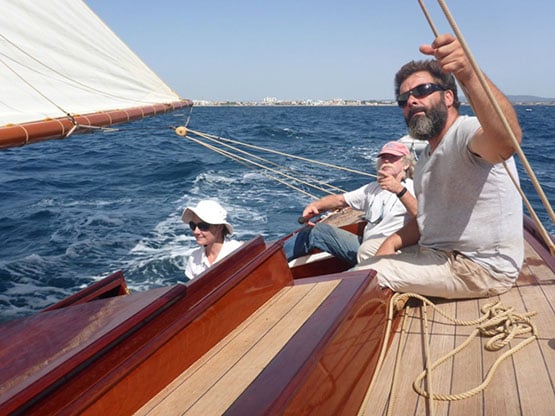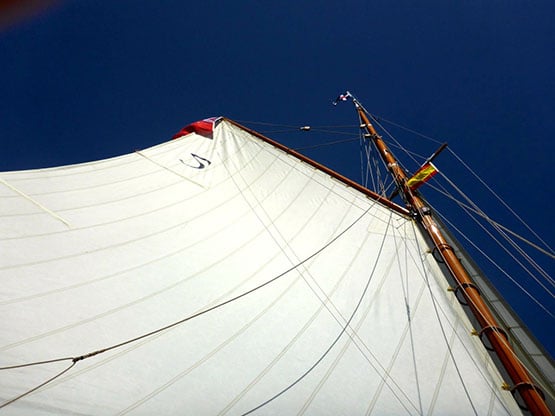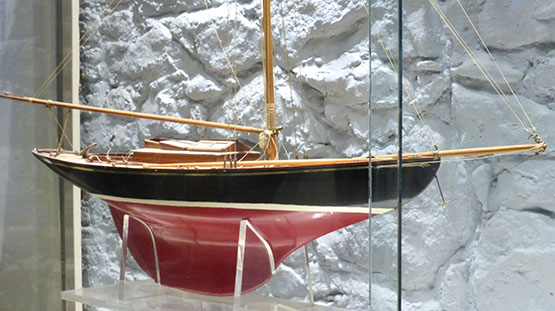Displaying items by tag: tern
Restored 1897 Belfast Lough OD Tern Makes Successful Debut At Les Voiles De St Tropez 2015
The 1897-built Fife-designed 37ft Belfast Lough One Design Tern has made a successful debut in the classics scene in the Mediterranean by winning her class in Les Voiles de St Tropez 2015 writes W M Nixon.
We’ve reported from time to time on the Mallorca-based restoration project on Tern on Afloat.ie over the past 18 months. But we were keeping our fingers crossed that all would continue to go well after her successful launching on August 6th - so much effort was going into the final work and detailed finishing that, with time limited before she could be taken to the major regattas in the south of France, all and any sorts of hitches could still occur.
Since then, there has been further concern with the weather in southeast France being exceptionally bad, with seriously adverse effects in recent days on the classic events in both Cannes and St Tropez. But Tern has not only come through unscathed, she has won her class overall despite the fact that there was only racing on two days at St Tropez, recording a first and second.
This has all been hugely confidence-building for the team involved, and greatly improves the likelihood of Tern coming to Ireland next year. The Royal Ulster Yacht Club on Belfast Lough – which was her home club in her early days and still displays several photos of Tern and her six pioneering sisters from 1897 and 1898 - is celebrating its 150th Anniversary in 2016, while at different times Tern was also based in Cork Harbour, Waterford and Dun Laoghaire, and she was one of the five yachts taking part in the Founding Cruise of the Irish Cruising Club to Glengarriff in July 1929, giving Tern direct links with all of the Irish coast between West Cork and County Antrim, as she was built by Hilditch in Carrickfergus.

Aboard Tern on her first sail since restoration, off the coast of Mallorca in August
 When the new Belfast Lough ODs started racing in May 1897, it all happened so quickly that when sailmakers Ratsey & Lapthorne at their Scottish loft found that they lacked Tern’s allocated sail number 7, shortage of time meant they simply used an inverted 2 instead, and this has been faithfully replicated in the new 2015 sails, also made by Ratsey & Lapthorne.
When the new Belfast Lough ODs started racing in May 1897, it all happened so quickly that when sailmakers Ratsey & Lapthorne at their Scottish loft found that they lacked Tern’s allocated sail number 7, shortage of time meant they simply used an inverted 2 instead, and this has been faithfully replicated in the new 2015 sails, also made by Ratsey & Lapthorne.
As well, the hull lines of the BLOD 25s from 1897 were then used for the building of the Dublin Bay 25s from 1898 onwards, though the Dublin Bay boats had a higher specification, and carried a lead ballast keel instead of the Belfast Lough boats’ less expensive cast iron.

One of the famous William Maguire Dublin Bay models in the National Yacht Club is of the Fife-designed Dublin Bay 25ft OD, whose hull lines were identical to Tern. And Tern herself - though by that time rigged as a cruising yawl - was based at the National YC from 1944 to 1954, firstly under the joint ownership of Charles E Hogg and Maurice Healy from 1944 to 1949, and then under the ownership of J J Lenihan until 1954, after which she moved to Falmouth in southwest England. Photo: W M Nixon
Record Year for Rare Seabird on Wicklow Beach
#terns – 2014 has been the best breeding year on record for one of Ireland's rarest seabirds, the little tern.
The County Wicklow birds are protected and enjoy 24–hour monitoring because for many years they were a species on the brink. There are now 111 breeding pairs and 213 chicks, a record since monitoring began 30 years ago at Kilcoole beach, one of the few remaining little tern colonies in the country.
The story for the national broadcaster by RTE's Philip Bromwell was – amazingly – filmed entirely on an iPhone 5S.





























































